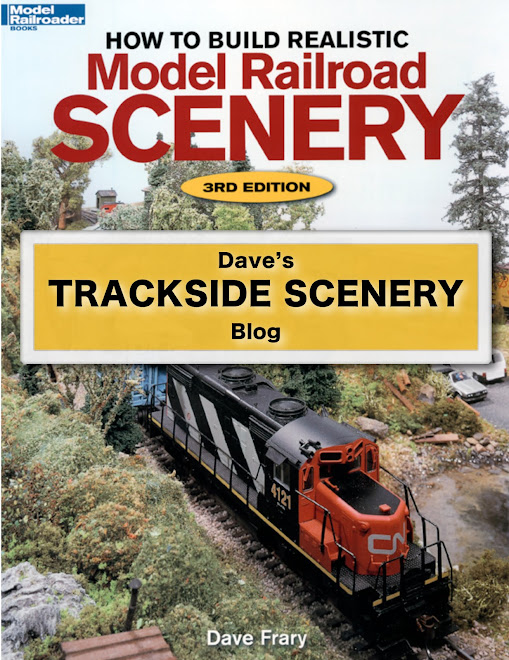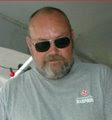This is a kit from Full Steam Ahead. It's an O-scale craftsman-style kit called Frary's Fine Furniture. I had to build this since it was named after me!
Frary's Furniture is based upon a model that Troels Kirk built on his On30 layout in Sweden. I was honored when I saw the building on his layout. Troel's layout was described in many postings on the Railroad Line.
I guess Full Steam Ahead liked the model also. Seeing it advertised I ordered one. I paid the retail price plus shipping from Canada. I say this because folks think I get everything for nothing. It's not the case - I payed for this one.
I took all the parts to the spray booth and painted the walls a Prairie Grass color (light green) and painted the windows and doors, and the trim a light tan Rustoleum Camouflage color. When dry I added a raw sienna in mineral spirits wash to all the walls to tone them down a bit. Then I added wood grain with a metal-bristled brush. When complete I plan to weather the walls with PanPastels.
Construction started by following the three pages of bracing diagrams. Stripwood is glued to the rear of the building walls to keep them from warping. My first mistake was following these instructions - a lot of the bracing especially at the corners is in the way of fitting the walls together.
But, I followed the instructions, braced the walls and added the doors and windows. The tops of the side walls have laser-cut paper shingles that are applied using lines on the walls as a guide. I lightly colored all the laser-cut paper shingles while they were flat using a gray and brown camo spray paint.
The rear wall has a loading door and two doors are provided to fit into the opening. I built and added the largest door to the opening and it filled half the opening. The second door was much smaller and if I put it in the opening there would be a 1/8" gap where the doors come together. I left out the smaller door. So now I have a loading door opening that has a door in half of it. Do the manufacturer's even build these kits? I'll ad-lib another door to fill the gap.
Now it was time to add the corner trim and assemble the box. I added the trim where indicated in the photo instruction sheet. But putting the box together was impossible. The bracing from step one was in the way in SIX places!
So I spent an hour carefully removing the bracing. I use the pink glue from Northeastern Scale Lumber for wood to wood joints. If you've tried to remove wood glued with it then you know it's impossible. So I resorted to using the MicroMark table saw as a dado to carefully mill away the bracing without damaging the front side of the walls. This was a major PITA and took a joyless hour!
Then I sanded the backs of the walls where the bracing was to get them thin enough to make a neat corner. Now I could assemble the four walls.
A strange thing I found, there's a door inside the front wall on the lower level. When the store front is added this door will be invisible - it's a mystery as to why it's there and why a Grandt Line casting was provided for it. I removed the casting because I plan to decorate inside the front store with some wallpaper and the laser-cut furniture provided with the kit.
I glued paper cut-outs from an art catalog to the back walls - on both floors to create a background to be viewed through the windows.
Pre-cut cardboard is provided for the roof pieces and unlike the shingled side walls there are no lines on the roof surface to make sure the shingles stay straight. The question is why put lines on the sides and not the top? Anyway, I drew lines with a straight edge and a pencil on the roof pieces to help align the laser-cut paper shingles. After the lines were drawn I covered the roof pieces with Scotch double sided tape to hold the shingles in place.
There are no chimneys provided so I made one from a plastic Grandt Line casting and a second from a resin casting.
This building is too small to be practical and needs an addition - maybe a barn-like furniture factory connected to the rear.
The coloring and weathering of the finished kit is another story. I'll post it here as I complete the steps.
















































